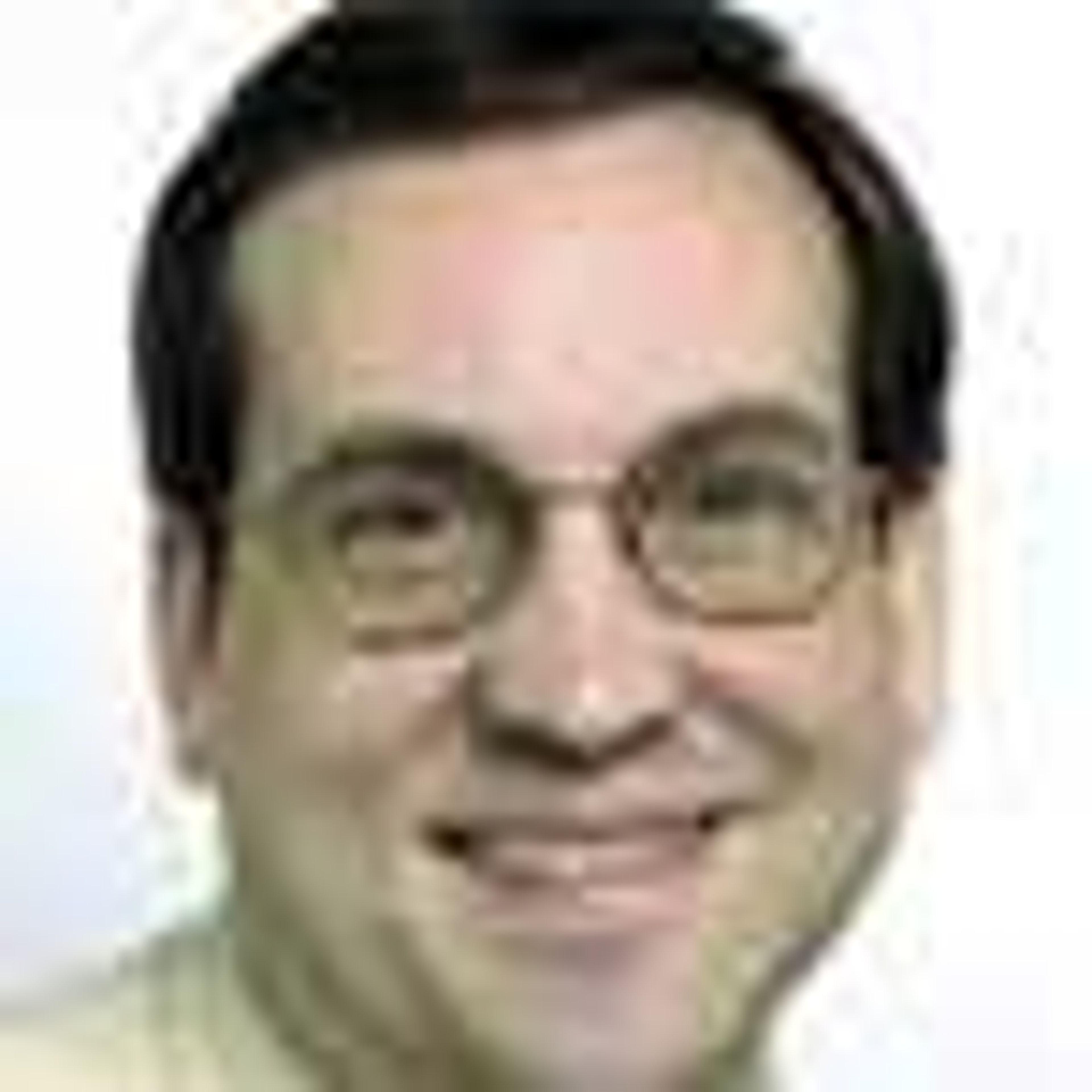The university's observatory north of Cape Girardeau includes a telescope with a rolling shed.
Girl Scout Alison Roth got a close-up look at the moon with a telescope at the Southeast Missouri State University observatory.
Physics professor Dr. Michael Cobb likes to be in the dark. It makes it easier to spy the stars.
"Astronomy is a night job," he confides.
Cobb, who chairs Southeast Missouri State University's physics department, is a virtual ambassador of astronomy.
When he was in the fifth grade growing up in Kansas, he received a telescope for Christmas. He has been focused on the stars ever since.
He loves the science of the skies. It's a love that led him almost singlehandedly to establish an observatory on a windy hilltop on the university farm just west of Cape Girardeau and Interstate 55.
On the surface, it's not much to look at: a few storage-shed type buildings, including one that serves as an office, complete with hand-me-down university furniture.
There are three concrete pads at the site, but only one currently anchors a telescope.
On that pad stands an 11-inch-diameter telescope. It is housed inside a vinyl-covered, storage shed. The shed rests on skateboard wheels that roll along a track, allowing Cobb and his students to move the structure out of the way so that the telescope can view the heavens.
A 10-inch, computer-controlled telescope has been ordered for the second pad. The $3,500 instrument likely will be installed next spring.
The telescope has one big advantage. It can be programmed to find a particular star or planet, eliminating the need for a manual sighting.
Manually lining up the telescope takes a high level of skill, Cobb said.
The new telescope will allow Cobb and his students to view the magnified images of planets and stars on a computer monitor in the office/control room.
Besides the 11-inch telescope, the university has portable 8-inch and 5-inch telescopes and high-powered binoculars.
The observatory includes a 12-foot white satellite dish. Currently, it isn't being used.
But Cobb hopes to eventually use it for a radio telescope to measure and study the radio waves that are emitted by planets and stars in the universe.
Cobb said he started working on the observatory more than a year ago. His family helped too.
"We just went out and built it," said Cobb. The site has no plumbing or restrooms. There's little room for parking.
"We spent about $10,000 in all," said Cobb. Most of the funding came from physics department alumni.
The observatory was officially dedicated about a month ago.
Cobb said the observatory has made it easier for him to share the science of the skies with his astronomy-class students.
In the past, telescopes had to hauled to the roof of the university's science building.
But as the campus has developed, new lights made it difficult to scan the sky. The bright lighting around the business building made it particularly difficult to view the starts.
Stargazing was moved to a city park for a time. But Cobb said that wasn't ideal either, particularly since it involved transporting delicate telescopes.
With the observatory, telescopes can be permanently mounted. That both protects the equipment and saves setup time.
The observatory is open to students in the astronomy class on Tuesday and Thursday nights, weather permitting.
Cobb also gives guided tours of the stars to various community groups, such as Girl Scout troops.
Cobb predicted the observatory will have to be moved eventually because of light pollution. The city of Jackson wants to extend East Main Street to I-55. The route runs just south of the observatory.
Cobb said the problem of light pollution will grow with continued development.
Cobb lives five miles west of Jackson. "It's real nice and dark," said Cobb, adding that it makes it easier to view the stars.
The lights in Cape Girardeau make it more difficult to view the stars. "You have to go 10 to 15 miles out of town before you get what I call dark skies," said Cobb.
Light pollution extends a great distance, he said. "On a good night from Jackson, I can see the glow from St. Louis."
Dark sky associations have sprung up in an effort to address the problem. "There is a whole industry around trying to darken cities, but still keep them safe," said Cobb.
People today don't see all the stars that their ancestors did because of all the city lights, Cobb said.
"I get many students who come from the big city, and they probably have never seen a dozen stars all their life."
For Cobb, there's nothing like gazing at the vastness of the universe to put life into perspective. "It helps keep me humble," he said.
Connect with the Southeast Missourian Newsroom:
For corrections to this story or other insights for the editor, click here. To submit a letter to the editor, click here. To learn about the Southeast Missourian’s AI Policy, click here.







